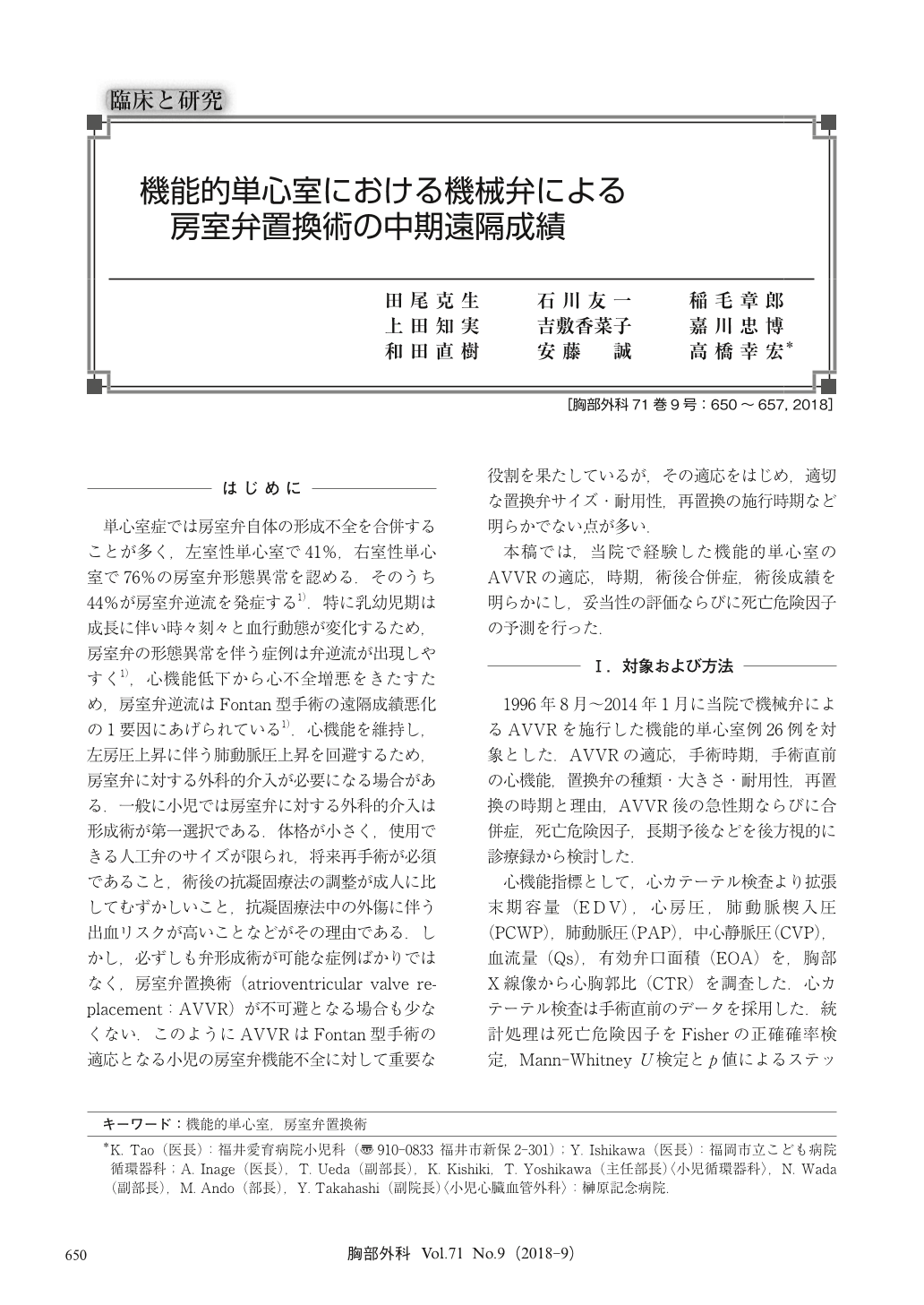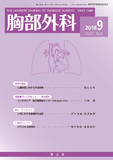Japanese
English
- 有料閲覧
- Abstract 文献概要
- 1ページ目 Look Inside
- 参考文献 Reference
単心室症では房室弁自体の形成不全を合併することが多く,左室性単心室で41%,右室性単心室で76%の房室弁形態異常を認める.そのうち44%が房室弁逆流を発症する1).特に乳幼児期は成長に伴い時々刻々と血行動態が変化するため,房室弁の形態異常を伴う症例は弁逆流が出現しやすく1),心機能低下から心不全増悪をきたすため,房室弁逆流はFontan型手術の遠隔成績悪化の1要因にあげられている1).心機能を維持し,左房圧上昇に伴う肺動脈圧上昇を回避するため,房室弁に対する外科的介入が必要になる場合がある.一般に小児では房室弁に対する外科的介入は形成術が第一選択である.体格が小さく,使用できる人工弁のサイズが限られ,将来再手術が必須であること,術後の抗凝固療法の調整が成人に比してむずかしいこと,抗凝固療法中の外傷に伴う出血リスクが高いことなどがその理由である.しかし,必ずしも弁形成術が可能な症例ばかりではなく,房室弁置換術(atrioventricular valve replacement:AVVR)が不可避となる場合も少なくない.このようにAVVRはFontan型手術の適応となる小児の房室弁機能不全に対して重要な役割を果たしているが,その適応をはじめ,適切な置換弁サイズ・耐用性,再置換の施行時期など明らかでない点が多い.
We prospectively investigated the relation of adaptation, timing of atrioventricular valve replacement (AVVR), valve type, size, durability of replacement valve, and preoperative cardiac function with prognosis of AVVR. The subjects included 26 patients [15.5 years old (day 2-43 years)] with functional single ventricle who underwent AVVR at our institution between August 1996 and January 2014. Of these patients, 24 had regurgitation, whereas 2 had stenosis.
Of 7 patients who died, 3 were infants who died in the postoperative acute phase, and all of them had severe heart failure at the preoperative stage. The 5-year survival rate was 67% as assessed by Kaplan-Meier curve.
On univariate analysis of the preoperative data, pulmonary artery pressure (PAP), pulmonary capillary wedge pressure, age at operation, body height, and body weight were significant risk factors for death;of these, only PAP remained in the last model for multiple regression analysis.
AVVR for regurgitation is supposed to reduce cardiac volume load and help improve prognosis. Atrioventricular valve plasty or replacement should be performed prior to the development of severe heart failure.

© Nankodo Co., Ltd., 2018


